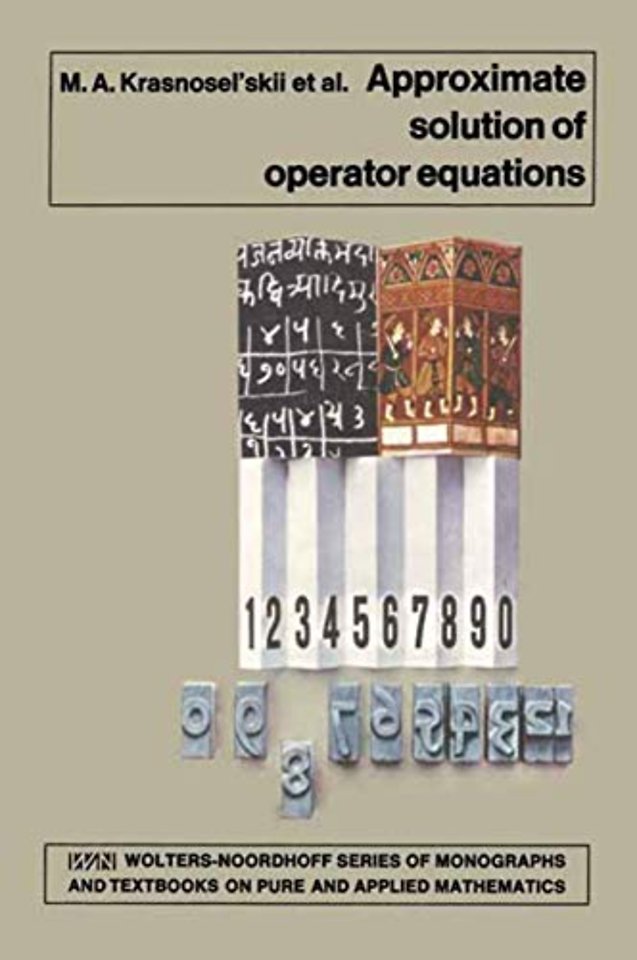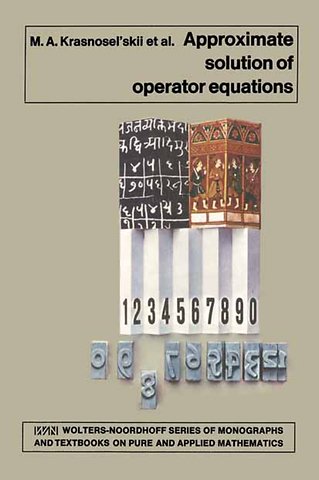Approximate Solution of Operator Equations
Samenvatting
One of the most important chapters in modern functional analysis is the theory of approximate methods for solution of various mathematical problems. Besides providing considerably simplified approaches to numerical methods, the ideas of functional analysis have also given rise to essentially new computation schemes in problems of linear algebra, differential and integral equations, nonlinear analysis, and so on. The general theory of approximate methods includes many known fundamental results. We refer to the classical work of Kantorovich; the investigations of projection methods by Bogolyubov, Krylov, Keldysh and Petrov, much furthered by Mikhlin and Pol'skii; Tikho nov's methods for approximate solution of ill-posed problems; the general theory of difference schemes; and so on. During the past decade, the Voronezh seminar on functional analysis has systematically discussed various questions related to numerical methods; several advanced courses have been held at Voronezh Uni versity on the application of functional analysis to numerical mathe matics. Some of this research is summarized in the present monograph. The authors' aim has not been to give an exhaustive account, even of the principal known results. The book consists of five chapters.
Specificaties
Inhoudsopgave
Net verschenen
Rubrieken
- aanbestedingsrecht
- aansprakelijkheids- en verzekeringsrecht
- accountancy
- algemeen juridisch
- arbeidsrecht
- bank- en effectenrecht
- bestuursrecht
- bouwrecht
- burgerlijk recht en procesrecht
- europees-internationaal recht
- fiscaal recht
- gezondheidsrecht
- insolventierecht
- intellectuele eigendom en ict-recht
- management
- mens en maatschappij
- milieu- en omgevingsrecht
- notarieel recht
- ondernemingsrecht
- pensioenrecht
- personen- en familierecht
- sociale zekerheidsrecht
- staatsrecht
- strafrecht en criminologie
- vastgoed- en huurrecht
- vreemdelingenrecht

